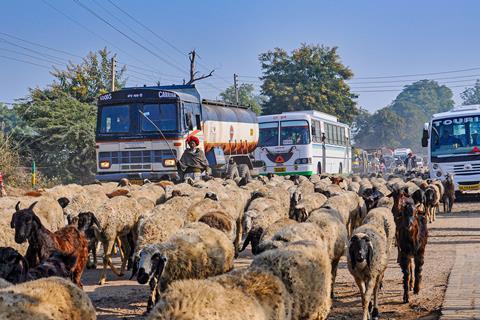Levels of nitrogen dioxide in rural India found to be just as harmful to human health as that in urban areas
-

Download this
Use this story and the accompanying summary slide to add new context when teaching atmospheric pollutants caused from burning fuels with your 14–16 learners.
Download the story as MS Word or PDF and the summary slide as MS PowerPoint or PDF.
An analysis of satellite observations indicates that 41% of India’s nitrogen dioxide pollution comes from rural areas. ‘We usually think atmospheric pollution exists only in cities,’ explains Mansi Pathak, from the Indian Institute of Technology Kharagpur. ‘However, our analysis suggests that it is high time to shift our focus to rural regions and examine the pollution levels and health of rural India. This is of paramount importance for a country like India, as we have about 67% of the country’s population in its rural areas as of 2020.’
NO2 is a key atmospheric pollutant that is known to have an adverse effect on public health. Regular exposure to NO2 is linked to an increased incidence of acute respiratory illness in children and other vulnerable groups.
Plugging gaps

Air quality monitoring stations in rural India are scarce. Mansi and lead researcher Jayanarayanan Kuttippurath used over 30 years of satellite observations and nearly 50 years of estimated data from the Emissions Database for Global Atmospheric Research (EDGAR) to map out the distribution and sources of NO2 in these regions. They concluded that NO2 air pollution in rural India is as much of a concern to human health as it is in urban areas.
The duo’s major findings were that rural NO2 pollution accounts, on average, for 41% of the country’s total and that some rural pollution levels are almost as high as urban levels. The researchers also noted a difference in the sources of urban and rural NO2 emissions. In rural India, road transport is the primary source. However, in urban areas, the power sector was found to be the major contributor to rising NO2 levels.
‘It is important to provide explicit scientific evidence of how pollutant and sector contributions vary in rural versus urban areas,’ explains Srinidhi Balasubramanian, an air quality expert at the Indian Institute of Technology Bombay who was not involved in this work. ‘This way, local and state level stakeholders, especially regulators, can help identify actionable policies. This study is an excellent example of [this].’
This article is adapted from Lily Newton’s in Chemistry World.
Nina Notman
Reference
M Pathak and J Kuttippurath, Environ. Sci.: Processes Impacts, 2022, 24, 2437 (DOI: 10.1039/d2em00293k)
Download this
Summary slide with questions and the article pdf for context when teaching your 14–16 classes on atmospheric pollutants: rsc.li/40TZPdo
Downloads
EiC science research story NO2 pollution
Word, Size 0.59 mbEiC science research story NO2 pollution
Handout | PDF, Size 0.22 mbEiC summary slide NO2 pollution
Presentation | PowerPoint, Size 1.25 mbEiC summary slide NO2 pollution
Presentation | PDF, Size 0.26 mb














No comments yet